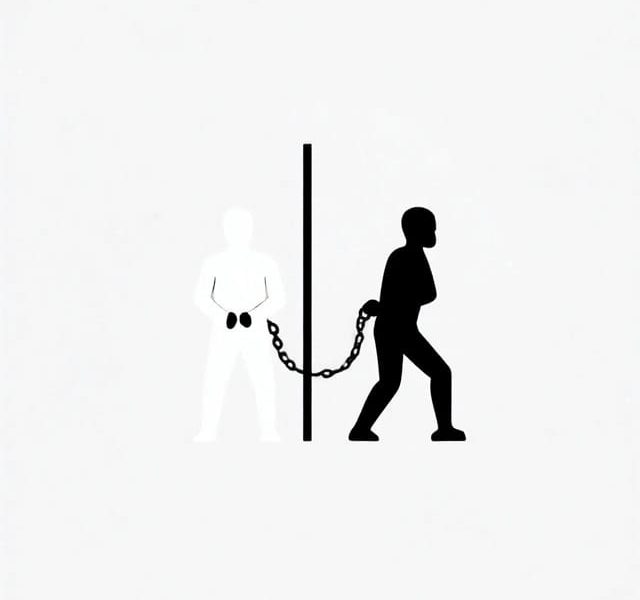Throughout history, societies around the world have grappled with systems that deprive individuals of their freedom. Among the most insidious of these systems are involuntary servitude and peonage. While these terms are often used in legal, historical, and human rights contexts, understanding their full implications is essential. They refer to situations where individuals are forced to work against their will, often under threat, coercion, or abuse of legal or financial mechanisms. The fight against such practices is ongoing, despite global legal frameworks that seek to eliminate them. This topic delves into the meaning, origin, legal stance, and contemporary relevance of involuntary servitude and peonage.
Definition of Involuntary Servitude
Involuntary servitude refers to a condition in which an individual is forced to work against their will by means of coercion, threats, or physical restraint. It is different from slavery in that the individual may not be owned as property, but they are still deprived of their liberty to choose employment freely. In the United States, this concept is strongly tied to the Thirteenth Amendment to the Constitution, which abolished slavery and involuntary servitude except as punishment for a crime.
Key Characteristics
- The person is compelled to work by force or threats.
- There is no legal ownership of the person, but liberty is restricted.
- The coercion can be physical, psychological, or financial.
- It includes forms such as domestic servitude, forced labor, and trafficking.
Understanding Peonage
Peonage, sometimes referred to as debt servitude, is a system where an individual is bound to work for another person to pay off a debt. Unlike a voluntary repayment plan, peonage involves compulsion and often manipulative practices. Workers are typically trapped in a cycle of debt that is nearly impossible to escape due to inflated charges, hidden fees, or unlawful deductions. Peonage was especially prevalent in the post-Civil War southern United States but has appeared in various forms globally.
Core Elements of Peonage
- The worker is tied to the employer due to a financial obligation.
- Work is demanded as a condition of repayment.
- The worker often has no meaningful way to reduce or escape the debt.
- Legal protections are absent or ignored, reinforcing the cycle.
Historical Context
Involuntary servitude and peonage are not new phenomena. These systems have existed in ancient civilizations, feudal societies, colonial territories, and modern economies. Following the abolition of formal slavery in the United States, many southern states used peonage and similar practices to maintain a labor force composed primarily of formerly enslaved individuals. Sharecropping, convict leasing, and vagrancy laws were employed to legally enforce servitude.
Post-Abolition Era in the U.S.
After 1865, many states enacted laws that effectively re-enslaved African Americans under the guise of criminal justice or debt repayment. Individuals could be arrested for minor offenses and forced to work off their ‘fines’ in labor camps or on plantations. These practices were officially outlawed, but often continued unchecked until the mid-20th century.
Legal Framework
The prohibition against involuntary servitude and peonage is enshrined in both national and international legal instruments.
U.S. Constitutional Provisions
- Thirteenth Amendment: Neither slavery nor involuntary servitude, except as a punishment for crime shall exist within the United States.
- 18 U.S.C. § 1581: Federal law criminalizes the practice of peonage.
- 18 U.S.C. § 1584: Also prohibits involuntary servitude, including attempts to force someone into it.
International Protections
- Universal Declaration of Human Rights (topic 4): Prohibits slavery and servitude in all forms.
- International Labour Organization (ILO) Conventions: Advocate the abolition of forced labor globally.
- United Nations Protocols: Address human trafficking and exploitation linked to involuntary labor.
Modern Examples and Challenges
Despite legal prohibitions, involuntary servitude and peonage continue to exist in subtle and not-so-subtle forms. These include forced domestic work, agricultural labor, factory jobs under coercive conditions, and sex trafficking. Migrant workers, undocumented individuals, and impoverished communities are particularly vulnerable. Employers may use threats of deportation, confiscation of identity documents, or manipulated debts to trap workers in exploitative arrangements.
Contemporary Cases
- Domestic Servitude: In some households, especially among diplomatic or elite families, domestic workers may be forced to labor long hours without pay or freedom.
- Labor Trafficking: Migrant workers recruited with promises of fair wages may find themselves in camps with poor conditions and no way out.
- Debt Bondage: In South Asia, some families have been bound for generations to landlords or employers due to inherited or fabricated debts.
Indicators of Involuntary Servitude
It is important to recognize the warning signs of these violations. Indicators may include:
- Restriction of movement or communication.
- Threats of harm or retaliation for leaving.
- Confiscation of passports or legal documents.
- Inability to quit a job despite desire to do so.
- Living and working conditions that are inhumane or exploitative.
Addressing the Issue
Combating involuntary servitude and peonage requires a multi-pronged approach. Governments must enforce existing laws and strengthen protections for vulnerable populations. Education and awareness campaigns can empower workers to recognize and report abuse. Employers must be held accountable, and victims must be offered safe exit routes and rehabilitation programs. Nonprofit organizations and international bodies also play a critical role in monitoring, reporting, and intervening in cases of modern-day servitude.
Policy Recommendations
- Strict enforcement of anti-trafficking laws.
- Legal aid and support for victims.
- Worker education on rights and protections.
- Inspections and audits in high-risk industries.
Involuntary servitude and peonage may sound like outdated terms, but their reality continues to impact millions around the world. Understanding these practices both historically and in modern settings is essential to advancing human rights and dignity. Although laws exist to prohibit them, the enforcement, awareness, and cultural shifts needed to fully eliminate these practices require ongoing commitment from governments, civil society, and individuals alike. Recognizing the signs and understanding the legal definitions are first steps in ensuring that every person has the freedom to work, live, and move without fear or coercion.
